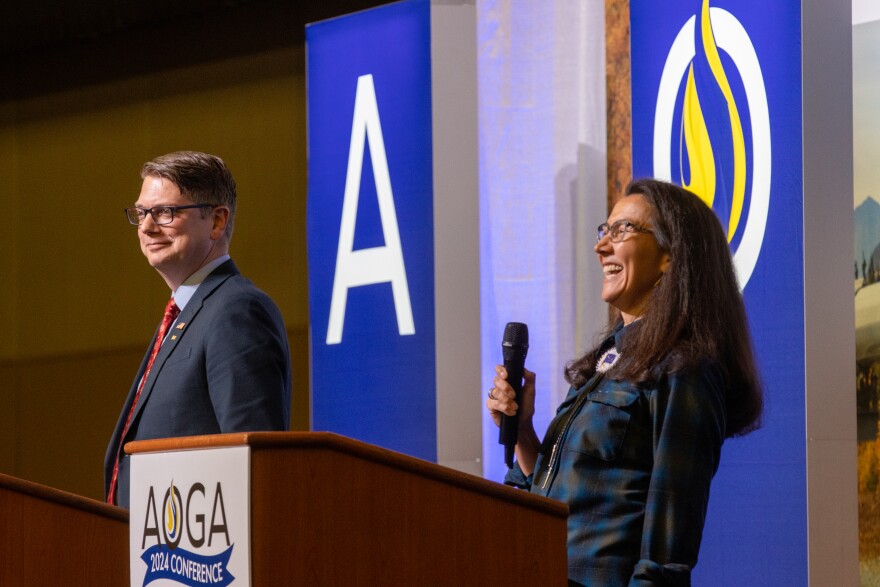Spending in Alaska's U.S. House race has exceeded $40 million, putting it near the top of the list of the most expensive House races in the country.
The fundraising operations of Democrat Mary Peltola and Republican Nick Begich haven’t been slouching. Combined, they’ve raised a total of more than $13 million, with Peltola, the incumbent, outraising Begich five to one.
But that sum is dwarfed by the $28 million that’s come from political committees and other groups buying their own ads and otherwise trying to convince you to vote for or against one of the Alaska candidates. The total of the independent spending isn’t just big in comparison to what the candidates have raised. It’s big on a national scale.
“I was actually really shocked that Alaska is the fourth race in terms of Super PAC spending this cycle," said Sarah Bryner, research director for OpenSecrets, which tracks money in politics. “This one is seen as a gettable win for the Republicans, and that's not common this cycle, and so they're going to do what they can to pick that up, presuming that they will also lose some of their races in other places.”
Democrats are trying just as hard to keep the seat.
The money is an indicator of how uncertain the outcome in the Alaska race is, and how important each seat is in a closely divided Congress. Alaska isn’t a swing state in the Presidential election, but it could swing control of the U.S. House.
The outside spending is almost divided evenly between Peltola and Begich. It comes to more than $13 million for each side, most of it spent on negative advertising.
Bryner noticed something else interesting about the outside groups spending on the Alaska race: Most are part of the national party infrastructure, like the Republican and Democratic congressional campaign committees.
“It is pretty wild, actually, that the funding for this is almost entirely the party committees, or their related Super PACs. Because that's not normal," she said. "Usually you have some other PAC involved, some interest or, you know, the oil industry or something. But this is clearly just the two parties squabbling over who's going to get this seat, and very little other spending."
(The "other" spenders include some deep pockets, though. Vote Alaska Before Party, which is working to reelect Peltola and previously helped Republican Sen. Lisa Murkowski, has spent more than $8 million on the 2024 House race. And Fairshake PAC, representing the cryptocurrency industry, has spent nearly $2 million to promote Peltola.)
The other reason the Alaska race is attracting so much money is that there aren’t a lot of other races that are worth investing in. Political Science Professor Bernard Tamas at Valdosta State University said that's a trend that’s been building for 50 years.
“it's gotten really extreme, with only a handful of districts that the major parties actually consider competitive," he said.
Gerrymandering is a factor, he said. In many large-population states, district lines are intentionally drawn to favor one party or the other.
“But there are a number of others that actually might be even larger in terms of what's leading to this," he said, citing demographics, education and economic variation.
He said voters are sorting themselves into ideologically similar areas as they look for jobs and choose to live in urban or rural communities.
But Alaska, with its one U.S. House seat, can’t be gerrymandered for a federal race, and its House member represents people from across the spectrum.


